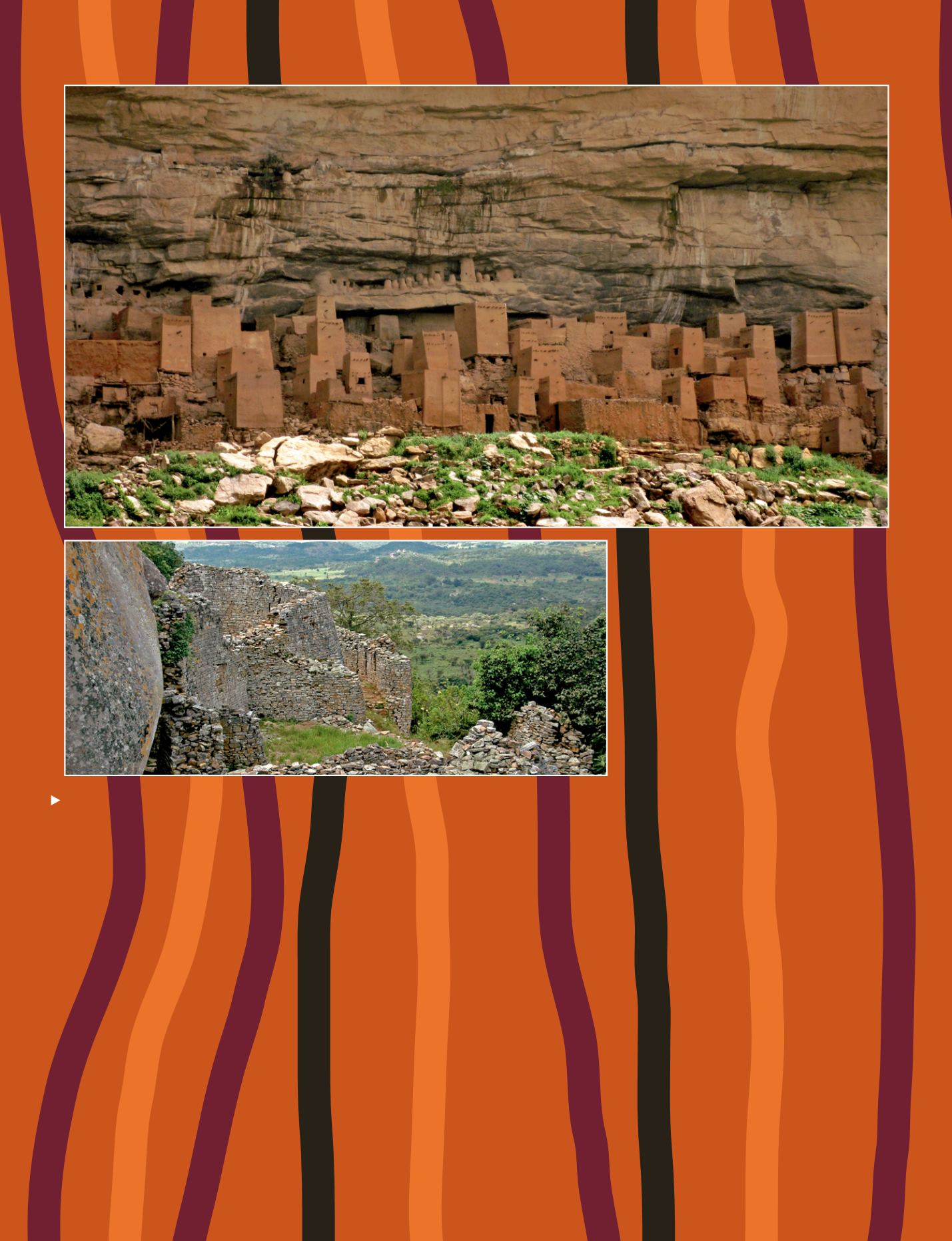
pesticides, hybrid crops etc. In using
indigenous knowledge, we share the
benefits of the long history of managing
and surviving in environments which have
never been favourable. Archaeologists have
a role to play into bringing to bear these
past perspectives into contemporary issues
– settlement patterns, land use patterns,
changing environments – in order to provide
a framework for today’s development.
It is obvious that some communities in
the past (such as the Pokot of Kenya and
Sandawe of Tanzania) have for a long time
embraced perennial streams within their
region to enhance their crop productivity
through irrigation. Rivers and streams
within their reach have provided these
people with ways and methods of survival.
Irrigation schemes going as far back
as 200 BC have been identified within
areas in Africa and these can be revived
to enhance productivity in such areas. In
addition, indigenous knowledge as regards
to medicinal plants is being practiced in
several regions in Africa.
Pastoralists’ ways of life have in the past
been characterized by a high degree
of flexibility. For example they varied
their mode of subsistence with contacts
with other non-pastoral groups and this
enabled them to interact and sometimes
live in exclusivity while, at the same time,
maintain specific modes of economy.
Commitment to sustainability
Other methods of herd management
included culling of herds. This culling
varied depending on the expected results.
For example, male calves could be culled to
reduce food competition with reproductive
females. On the other hand, calves close
to maximum body weight were culled in
order to supply food gains such as blood
and meat. These herding practices can
be studied in the archaeological record
by the bone/tooth remains and subjected
to periodic episodes of stress within the
environment. Today, pastoral communities
continue to utilize some of these practices
while others have been forgotten.
The pressure is currently on developers
to design projects which demonstrate a
commitment to sustainability, for example
using cultural heritage to help build
communities showing a true sense of
cohesionandbelonging. Ancient structures
such as those seen in communities within
Mapungubwe and Great Zimbabwe and
Thimlich in Kenya are evidence of a social
structure that was in place as early as the
14
th
century. These structures not only
show the social cohesion but also reveal
a society that utilized whatever local
resources are available and within reach.
In addition, these settlements achieved
and maintained economic, political,
and ideological hegemony through a
combination of both peaceful and coercive
means. Therefore structured settlements
geared towards political and economic
development were evident in Africa in the
past. Such knowledge can be tapped and
integrated to local resources of the historic
io
Two UNESCO World Heritage sites. Above, the
Cliff of Bandiagara (Mopti Region, Mali) first occupied
by the Tellem people. The Dogon settled there during
the 15
th
and 16
th
centuries.
© A.Barragan.
Left, the ruins of Great Zimbabwe (near Masvingo),
testimony to the lost civilization of the Shona
between the 11
th
and 15
th
centuries.
© M.Matsumoto
10 - Sustainable Development in Africa & Satellites


